Q
which bmw x5 engine is most reliable
Among the common engines found in the BMW X5, the inline six-cylinder engine is relatively renowned for its reliability. It strikes a commendable balance between power output, fuel efficiency, and durability. However, the reliability of an engine is also influenced by a variety of factors including maintenance conditions, operating environment, and driving habits.
Special Disclaimer: This content is published by users and does not represent the views or position of PCauto.
Related Q&A
Q
What Segment is BMW X5?
The BMW X5 belongs to the luxury mid - size SUV segment (i.e., the Luxury Mid - Size SUV or Executive SUV sub - market). In Malaysia, it's usually classified as a D - Segment vehicle, and it falls into the category of high - end family and business vehicles, competing with models like the Mercedes - Benz GLE and Audi Q7.
It has a body length of about 4.9 meters and comes with a standard 5 - seat layout (a 7 - seat option is available). It's equipped with either a 2.0T or 3.0T engine, and there's also a plug - in hybrid version. This makes it suitable for consumers who are looking for a balance between space and performance.
In the Malaysian market, this type of vehicle is often favored by family users who value practicality or corporate clients. In particular, the X5, thanks to its brand premium and the standard xDrive all - wheel drive system, can handle the diverse local road conditions.
It's worth noting that Malaysia's vehicle classification refers to the engine displacement grading of the Royal Malaysian Customs Department (JKDM). So, the 3.0L version of the X5 may incur higher taxes, while the 2.0L version is more price - competitive.
If you're considering the used car market, the X5 generally has a better resale value than non - luxury brands, but you need to factor in the maintenance costs when making your budget. Japanese alternatives in the same class, like the Lexus RX, offer a longer warranty period, while German competitors focus more on driving technology. Consumers can make a choice based on their own needs.
Q
What is the Reslae Value of BMW X5?
The BMW X5 has an excellent performance in the used - car resale value in Malaysia. Generally, the residual value rate of a 3 - year - old vehicle can be maintained at around 60% to 70%. It specifically depends on factors such as the vehicle's condition, mileage, maintenance records, and configuration versions. There is a stable demand for German luxury SUVs in the local market. Additionally, the X5 is quite popular in the used - car market thanks to its brand appeal, powerful performance (like the 3.0T engine in the xDrive40i), and luxurious interior features (such as the panoramic sunroof and the iDrive system).
However, it should be noted that the post - 2018 facelifted G05 generation, equipped with newer technological features (such as the 12.3 - inch dual - screen and intelligent driving assistance), has a better resale value advantage than the earlier F15 generation. It is recommended that car owners have their vehicles regularly serviced at authorized BMW service centers and keep complete maintenance records, which can significantly increase the resale value.
Moreover, in Malaysia's hot climate, special attention should be paid to the maintenance of rubber parts (such as sunroof seals) and the battery. These details can affect the final transaction price. Compared with its counterparts in the same class, the X5's resale value rate ranks among the top in the luxury mid - to - large SUV segment.
Q
How Many CC is BMW X5?
The engine displacement of the BMW X5 varies depending on the model and year. Currently, the common versions in the Malaysian market include the X5 xDrive40i, which is powered by a 3.0 - liter inline - six turbocharged engine with a displacement of 2,998cc (about 3.0L). The high - performance X5 M50i is equipped with a 4.4 - liter V8 twin - turbocharged engine with a displacement of 4,395cc (about 4.4L). Additionally, the plug - in hybrid X5 xDrive45e also uses a 3.0 - liter six - cylinder engine combined with an electric system.
Displacement (CC) is a unit used to measure the volume of an engine's combustion chamber, which directly affects power output and fuel efficiency. Generally, the larger the displacement, the stronger the power, but the higher the fuel consumption. When choosing an SUV in Malaysia, apart from displacement, you also need to consider the road tax system. The road tax for vehicles with a displacement over 1,800cc will increase significantly. The engine technology of the BMW X5, such as TwinPower Turbo, can balance performance and fuel economy, making it suitable for local consumers who pursue luxury and practicality.
Q
What is the Engine in BMW X5?
The BMW X5 comes with a variety of engine types. Some models are equipped with a 2.998L (3.0L) inline 4-cylinder turbocharged engine. For example, the 2025 BMW X5 xDrive40i M Sport has an intake type of Turbo. The engine has a maximum horsepower of 381PS, a maximum power of 280kw at a maximum power speed of 5000rpm, a maximum torque of 540N·m at a maximum torque speed of 1750rpm. There are also models like the 2025 BMW X5 xDrive50e M Sport, which also uses a 2.998L (3.0L) inline 4-cylinder turbocharged engine. This engine has a maximum horsepower of 489PS, a maximum power of 360kw at a maximum power speed of 5000rpm, a maximum torque of 700N·m at a maximum torque speed of 1750rpm, and it is equipped with a permanent magnet synchronous motor. Different engines offer drivers a diverse range of power options to meet different needs and driving preferences. Whether you're after a comfortable daily drive or a more powerful driving experience, you can find a suitable model.
Q
What is the Gearbox Type of BMW X5?
The BMW X5 is equipped with various types of transmissions depending on different models and years. Currently, the common models in the Malaysian market are mainly equipped with the Steptronic 8 - speed automatic manual transmission (8HP series). This transmission is provided by ZF Friedrichshafen AG and is known for its smooth shifting experience and fast response speed. It is especially suitable for SAV models like the X5, which combines both sportiness and luxury. For the high - performance version, the X5 M Competition, it is upgraded to a more aggressive 8 - speed M Steptronic transmission, which enhances the shifting logic and the ability to withstand high torque.
It's worth mentioning that some plug - in hybrid versions of the X5 xDrive45e also use the same 8 - speed transmission, but it has been optimized for the hybrid system. In Malaysia's hot and rainy climate, this type of transmission shows good durability, and the original - factory maintenance packages provided by local authorized dealers already include regular replacement of transmission oil.
With the development of technology, BMW has also introduced a mild - hybrid system to work in tandem with the transmission in some models in recent years, further reducing fuel consumption. This means more economical daily usage costs for Malaysian consumers.
If you're considering a used car, X5 models before 2018 might be equipped with a 6 - speed transmission, while the latest models come standard with an 8 - speed transmission across the board. It is recommended to check the specific configuration via the chassis number before purchasing a car.
Q
What is the PCD Size of BMW X5?
The PCD (Pitch Circle Diameter) of the BMW X5 is 5x120 mm, which means the diameter of the circle formed by the five bolt holes on the wheel hub is 120 mm. This specification applies to most BMW X5 models, including those sold in the Malaysian market. Understanding the PCD size is crucial when replacing the wheels or upgrading the brake system because an incorrect PCD can lead to the wheels not being installable or affect driving safety.
Apart from the PCD, when choosing wheels, you also need to pay attention to the center bore diameter (for example, it's usually 74.1 mm for the BMW X5) and the offset (ET value). These parameters together ensure a perfect match between the wheels and the vehicle. When modifying the wheels, Malaysian car owners are advised to choose products from regular manufacturers and consult professional technicians to ensure compliance with the original factory specifications, while also maintaining the vehicle's handling and safety.
As a luxury SUV, the wheel design of the BMW X5 not only emphasizes aesthetics but also takes performance and durability into account. Therefore, original or certified accessories can better unleash the vehicle's potential.
Q
Does BMW X5 Have Apple Carplay?
Yes, the BMW X5 does come with Apple CarPlay functionality. This feature is typically either a standard or an optional configuration in models sold in the Malaysian market, depending on the model year and trim level. Apple CarPlay enables users to seamlessly connect their iPhones via the in - car display, allowing them to use common apps such as maps, music, and make calls, which enhances convenience and safety while driving. The integration of BMW's iDrive system with Apple CarPlay is extremely smooth, supporting various operation methods like touchscreen, rotary knob, or voice control.
In addition, the BMW X5 also supports wireless Apple CarPlay, which automatically connects without the need for a cable, further streamlining the usage process. This feature is especially practical for Malaysian users, given the high demand for local road navigation and entertainment. Besides Apple CarPlay, the BMW X5 is also compatible with Android Auto, catering to the needs of different smartphone users.
If you're considering purchasing or already own a BMW X5, it's advisable to refer to the vehicle manual or contact a BMW dealer in Malaysia to confirm the detailed configuration of your specific model, ensuring you get the best possible experience.
Q
What is the Tyre Brand of BMW X5?
The original - equipped tire brands of the BMW X5 in the Malaysian market may vary depending on the model year and configuration. Common high - end tire suppliers include Michelin, Bridgestone, Pirelli, and Continental. These brands are known for their excellent grip, quietness, and durability, which are particularly suitable for the needs of high - performance SUVs like the X5.
For Malaysian consumers, when choosing tires, in addition to considering the brand, they also need to pay attention to the local climate conditions. For example, in rainy weather, it is recommended to choose a tire tread design with excellent drainage performance. And for those who often drive long - distances, wear - resistant tires can be a priority.
If you need to replace the tires, it is recommended to refer to the specifications officially recommended by BMW (such as the common 275/45 R20 or 315/40 R20, etc.), and obtain genuine products through authorized dealers or professional tire shops. At the same time, regularly check the tire pressure and wear to ensure driving safety.
In addition, some car owners may upgrade to sport - type or all - terrain tires according to their personal preferences. However, it should be noted that such adjustments may affect the fuel consumption and handling performance calibrated by the original factory.
Q
Is BMW X5 a Good Car? Learn the Pros and Cons Here
As a luxury SUV, the BMW X5 has performed quite impressively in the Malaysian market. Its advantages include strong power performance. In particular, the 3.0T or 4.4T engines it is equipped with offer a smooth acceleration experience. At the same time, it has excellent handling. The chassis tuning strikes a balance between comfort and sportiness, making it suitable for Malaysia's diverse road conditions.
In terms of the interior, the X5 uses high - quality materials and advanced technological configurations, such as the iDrive system and the full - LCD instrument panel, which enhance the driving experience. Moreover, it has a spacious interior, especially the rear seats and the trunk, making it suitable for family outings.
However, the drawbacks of the X5 lie in its relatively high maintenance costs and fuel consumption. Especially in congested urban areas, the long - term usage cost may be quite high. Additionally, some owners have reported that its suspension feels a bit stiff on rough roads.
For Malaysian consumers, if they have sufficient budget and value brand and driving quality, the X5 is a good choice. However, they need to weigh the daily usage costs. Competitors in the same class, such as the Mercedes - Benz GLE and the Audi Q7, are also worth considering as they each have their own advantages in different aspects. It is recommended to take test drives and make comparisons based on personal needs.
Q
What is the Width of BMW X5?
The body width of the BMW X5 is 2,004 millimeters (excluding the rear - view mirrors). When including the rear - view mirrors, it expands to approximately 2,200 millimeters. This dimension is at the mainstream level among luxury SUVs. It not only ensures the comfort of the lateral space inside the vehicle but also can adapt to the common urban roads and parking lots in Malaysia. As a mid - to large - sized SUV that emphasizes both sportiness and luxury, the width design of the X5 takes both dynamic stability and practicality into account. Its wheel - track layout and short front - overhang design further optimize the handling performance, making it suitable for the diverse road conditions in Malaysia. Compared with its competitors in the same category, such as the Mercedes - Benz GLE (width: 1,947 millimeters) and the Audi Q7 (width: 1,970 millimeters), the X5 is slightly wider. However, when making an actual choice, other parameters such as wheelbase and ground clearance also need to be comprehensively considered. For Malaysian consumers, while the width of the X5 provides a spacious riding experience, they still need to pay attention to the passability on some narrow roads in old urban areas or in mechanical parking spaces. It is recommended to measure the commonly used parking spaces on the spot before purchasing the vehicle. This model offers multiple powertrain versions in the Malaysian market, including fuel - powered and plug - in hybrid options, meeting the different needs of users for performance and environmental protection.
Latest Q&A
Q
What is the Gearbox Type of Perodua Nexis?
As an upcoming all-new SUV model, the official details about the transmission type of the Perodua Nexis haven't been released yet. However, based on Perodua's consistent technical approach and market positioning, it's expected to be equipped with a proven D-CVT continuously variable transmission or a 4-speed automatic transmission. These two types of transmissions have been widely used in Perodua's existing models like the Aruz and Bezza. They are particularly suitable for the urban road conditions in Malaysia, balancing fuel economy and a smooth driving experience.
It's worth noting that the D-CVT transmission offers a more direct power response by simulating gear shifts, while the traditional automatic transmission is known for its durability and low maintenance costs. Consumers can choose according to their own driving habits. If the Nexis is positioned as a youthful SUV, more advanced transmission technologies may be introduced to enhance its competitiveness. It is recommended to follow Perodua's official press conference for the final configuration information.
Malaysian consumers can refer to the actual test - drive experience when making a purchase. The transmission tuning has a significant impact on the daily driving comfort. Meanwhile, the transmissions of all Perodua models have been locally adapted to suit the tropical climate and diverse road conditions.
Q
What Engine is used in Perodua Nexis?
The Perodua Nexis is expected to be equipped with a 1.5-liter Dual VVT-i naturally aspirated engine. This engine shares the technical platform with models like the Perodua Ativa and Toyota Rush. It has a maximum output power of about 106 horsepower and a peak torque of 138 Nm. It is paired with a D-CVT transmission, focusing on fuel economy and smoothness in daily driving. The engine adopts a dual variable valve timing system, which can optimize the intake and exhaust efficiency at both low and high speeds and meets the EURO 4 emission standards in the Malaysian market. For Malaysian users who value practicality, this kind of small-displacement engine can balance the fuel consumption during city commuting and the occasional long-distance needs, and the maintenance cost is relatively low. It's worth mentioning that Perodua has gradually upgraded its power technology in recent years. For example, a more efficient 1.0-liter turbocharged option has been applied to models like the Bezza. In the future, it may also offer a hybrid version for the Nexis to adapt to the market trend, but the specific details shall be subject to the official release. The engine design of this kind of compact SUV usually gives priority to durability in tropical climates. It is recommended that car owners conduct regular maintenance to ensure long-term performance.
Q
How much engine displacement of Perodua Nexis?
The Perodua Nexis has not been officially launched yet, so the official has not announced its specific engine displacement (CC) data. However, according to industry speculation, this upcoming B-segment SUV might be equipped with the same 1.0-liter three-cylinder turbocharged engine as the Perodua Ativa. The engine has a displacement of 998cc, a maximum power of 98 horsepower, and a peak torque of 140 N·m, and is paired with a D-CVT gearbox. If the final configuration turns out to be true, this small-displacement turbocharged engine can balance fuel economy and power performance, making it very suitable for the urban road conditions in Malaysia. Meanwhile, Perodua models generally adopt a lightweight design, which further optimizes fuel consumption. It is recommended that consumers keep an eye on the latest news from the official Perodua website or authorized dealers to get accurate information. When making a purchase, Malaysian car owners can also make a horizontal comparison with engines of similar models, such as the 1.5TGDI engine (1477cc) of the Proton X50 or the 1.5L naturally aspirated engine (1498cc) of the Honda HR-V. However, they need to pay attention to the differences in road tax, insurance, and maintenance costs among engines with different displacements.
Q
Which Segment Does Perodua Nexis Belong to?
The Perodua Nexis falls into the B-Segment SUV category. This vehicle is positioned slightly higher than the Axia and Bezza in Perodua's product line. It mainly targets young family users who pursue space practicality and stylish design. The body size of the Perodua Nexis is expected to be similar to that of the Proton X50, but its price will be more affordable, continuing Perodua's characteristic of high cost - effectiveness.
B - Segment SUVs are very popular in the Malaysian market. Vehicles in this category usually have a relatively high ground clearance and flexible cabin space, which are suitable for the diverse local driving environments, including urban commuting and occasional countryside trips.
The Perodua Nexis is expected to be equipped with an energy - efficient 1.5L Dual VVT - i engine and may come with advanced safety systems such as ASA 3.0, continuing the brand's tradition of emphasizing fuel economy and safety.
For Malaysian consumers, B - Segment SUVs are a popular choice that combines practicality and a sense of trend. With its mature local production and a well - established after - sales service network, Perodua can often provide solutions that better meet local needs.hts.
Q
What is the Nissan Almera Specs? Here's the Full Specifications
The Nissan Almera is a highly popular Class B sedan in the Malaysian market. The latest model is equipped with a 1.0-liter three-cylinder turbocharged engine, delivering a maximum output of 100PS and a torque of 152Nm. It's paired with a CVT transmission and has a fuel efficiency of 5.1L/100km (NEDC standard). The vehicle's dimensions are 4,495mm (length) x 1,740mm (width) x 1,460mm (height), with a wheelbase of 2,620mm, offering generous rear - legroom.
In terms of safety features, it comes with 6 airbags, a Vehicle Dynamic Control (VDC) system, and a rear - view camera. The high - end version is also equipped with a 360 - degree surround - view camera and a blind - spot monitoring system. Inside the cabin, there is an 8 - inch touchscreen that supports Apple CarPlay and Android Auto, and an intelligent key system comes as standard.
The Almera adopts Nissan's latest V - Motion signature design language. The LED headlights and the floating roof design add a touch of modern style. This car is particularly well - suited for the urban driving environment in Malaysia. The small - displacement turbo engine can output high torque at low RPMs, making it ideal for stop - and - go traffic. Meanwhile, the relatively low fuel consumption and road tax also ease the long - term burden on car owners.
Among its competitors in the same class are the Honda City and the Toyota Vios. However, the Almera has distinct advantages in terms of power performance and technological features.
View MoreRelated News

How strong is the overall strength of the BMW X5 that it even makes the wealthy give up the Benz GLE and Audi Q7?
RobertSep 25, 2024

The 2024 BMW X5 xDrive50e is priced at RM 528,100, with 0-100km/h just taking 4.8 seconds
LienJun 26, 2024

BMW to Debut Limited-Edition 8 Series at Monterey Car Week
AshleyJul 31, 2025

Meet the New BMW M5 G90: Rear-Wheel Steering & RM1.18M Price Tag
AshleyJun 16, 2025
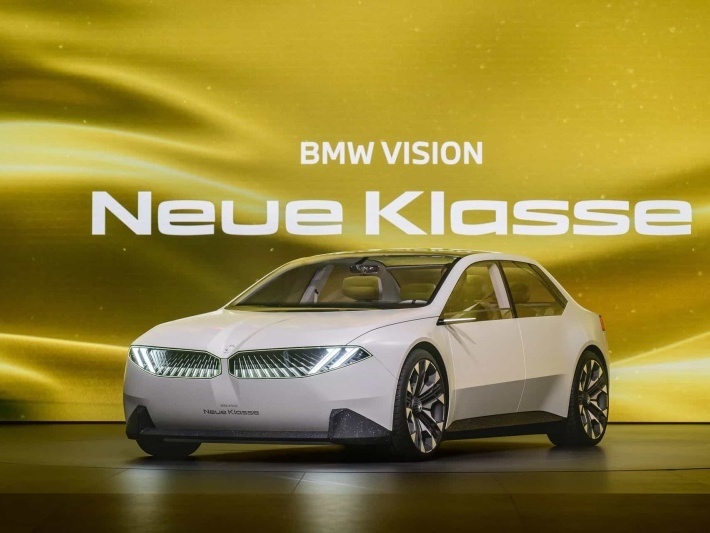
BMW Debuts Neue Klasse: Next 3 Series First to Feature
LienMay 30, 2025
View More

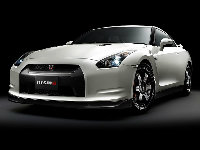







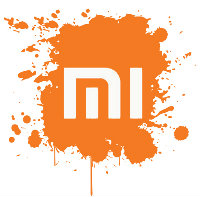


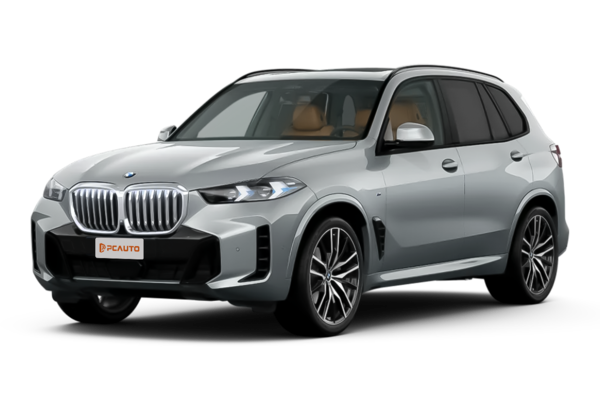



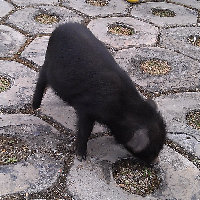

Pros
Cons